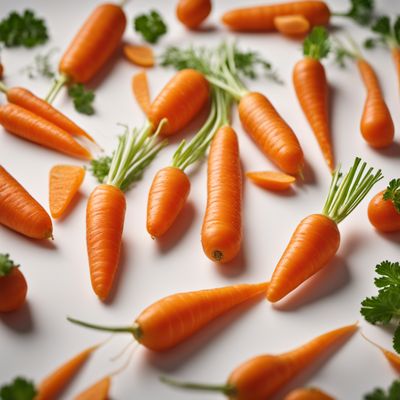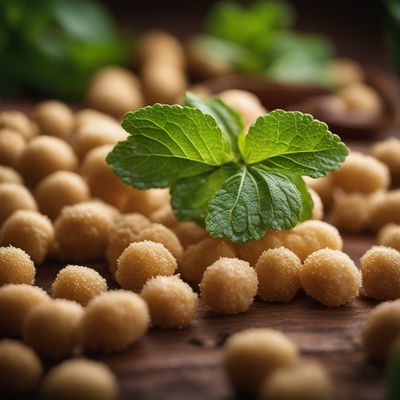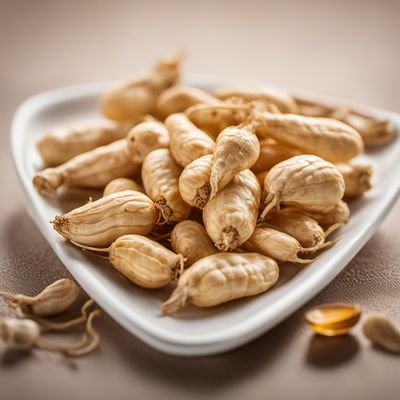
Ingredient
Tamarind flavour
The Tangy Delight: Tamarind Flavour
Tamarind flavour is derived from the pulp of the tamarind fruit, which is known for its distinctive tangy taste. It is commonly used in various cuisines, including Indian, Thai, Mexican, and Middle Eastern. The flavor is characterized by its sourness, with a hint of sweetness and a touch of bitterness. Tamarind flavour is available in various forms, including paste, concentrate, and powder, making it convenient to incorporate into different recipes.
Origins and history
Tamarind has a rich history and is native to tropical regions of Africa. It has been used in culinary traditions around the world for centuries, with its origins dating back to ancient civilizations. Tamarind flavour is widely used in Indian cuisine, where it is a key ingredient in chutneys, curries, and tamarind-based sauces. It is also a popular component in Thai dishes like Pad Thai and Tom Yum soup.
Nutritional information
Tamarind flavour is low in calories and a good source of antioxidants, vitamins, and minerals. It contains high levels of tartaric acid, which aids digestion and provides a refreshing flavor. However, it is important to note that tamarind flavour products may contain added sugars or preservatives, so it is advisable to check the label for any additional ingredients.
Allergens
May contain traces of peanuts or tree nuts.
How to select
When selecting tamarind flavour, opt for reputable brands that use high-quality tamarind pulp. Look for products that are free from artificial additives or excessive sweeteners. Tamarind paste should have a thick consistency and a deep brown color, while tamarind concentrate should be concentrated and tangy.
Storage recommendations
To maintain the freshness of tamarind flavour, store it in an airtight container in a cool, dry place. Tamarind paste or concentrate can be refrigerated to extend its shelf life. It is important to check the expiration date and discard any products that show signs of spoilage or mold.
How to produce
Tamarind trees can be grown in tropical or subtropical regions with well-drained soil and ample sunlight. They require regular watering and protection from extreme temperatures. Growing tamarind trees from seeds or young plants is possible for amateur gardeners, but it may take several years for the tree to bear fruit.
Preparation tips
Tamarind flavour can be used in a variety of dishes, including marinades, sauces, soups, stews, and desserts. It is commonly used in Indian dishes like tamarind rice, sambar, and chutneys. In Thai cuisine, it is a key ingredient in Pad Thai, Tom Yum soup, and various dipping sauces. Tamarind flavour can also be used to add a tangy twist to beverages, such as tamarind lemonade or tamarind margaritas.
Substitutions
Lemon juice or lime juice can be used as a substitute for tamarind flavour in certain recipes, although they may not provide the exact same tangy flavor. Additionally, tamarind paste can be substituted with equal parts of date paste or dried apricot paste for a similar sweet and tangy taste.
Culinary uses
Tamarind flavour is widely used in Indian, Thai, Mexican, and Middle Eastern cuisines. It is commonly incorporated into dishes like curries, chutneys, soups, and stir-fries. Tamarind-based sauces are also popular in Mexican cuisine, particularly in dishes like tamarind shrimp or tamarind-glazed pork. In Middle Eastern cuisine, tamarind is used in dishes like falafel and hummus.
Availability
Commonly available in tropical regions, including Southeast Asia, India, Mexico, and the Middle East. Tamarind flavour products can also be found in specialty stores or online retailers worldwide.
More ingredients from this category » Browse all

Carrot flavour
The Vibrant Essence of Carrots

Tonic flavour
"The Zest of Tonic: Unleashing the Vibrant Flavors of a Culinary Essential"

Strawberry yoghurt flavour
The Delightful Tang of Strawberry Yoghurt

Herbs flavour
The Essence of Nature

Stracciatella flavour
Velvety Chocolate Delight

Chives flavour
The Delicate Allium

Berries flavour
"Nature's Burst of Berry Bliss"

Estragon flavour
The Delicate Herb: Estragon's Subtle Allure

Red fruit flavour
The Essence of Red Fruits

Ginseng flavour
"The Energizing Essence: Unveiling the Enigmatic Ginseng Flavour"

Sweet and sour flavour
The Tangy Symphony

Leek flavour
"The Subtle Allure of Leek: Unveiling the Delicate Flavors of this Versatile Ingredient"